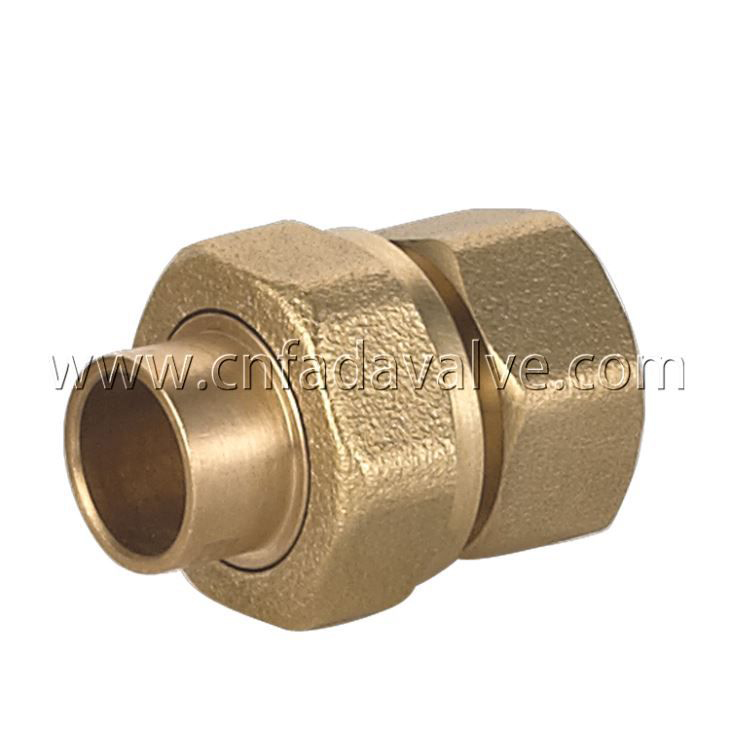Bronze fittings unions are critical components in piping systems, providing a reliable and convenient means of connecting and disconnecting pipes without the need for welding or threading. These fittings are widely used in plumbing, heating, cooling, and marine applications due to bronze's corrosion resistance, durability, and mechanical strength. The design of bronze fittings unions plays a key role in ensuring leak-free connections, ease of installation, and long-term performance.

The foundation of a well-designed bronze fittings union is the material from which it is made. Bronze, an alloy primarily consisting of copper and tin, is favored for its corrosion resistance, strength, and thermal conductivity.
Corrosion Resistance: Bronze naturally resists corrosion, especially from water, salt, and various chemicals. This property makes it ideal for both potable water systems and marine environments.
Mechanical Strength: The alloy's strength allows it to withstand the pressures and stresses commonly encountered in piping systems.
Compliance: Many bronze fittings are manufactured to meet industry standards such as ASTM B62 or NSF/ANSI 61, ensuring suitability for safe water applications.
Additional alloying elements such as zinc, phosphorus, or lead may be present in small amounts to improve machinability and mechanical properties, but lead content is strictly controlled in fittings intended for potable water.
A bronze fittings union typically consists of three main parts: the male end, the female end, and the union nut that joins them.
Each end is designed with threaded connections to fit standard pipe sizes. The threads must be precision-cut to ensure a tight, leak-proof fit and easy assembly. Common thread types include National Pipe Thread (NPT) and British Standard Pipe (BSP).
Thread Design: Threads are designed to withstand repeated assembly and disassembly without damage. This is important for unions, which are often used in locations requiring regular maintenance.
Shoulder or Stop Feature: Many unions include a shoulder or stop on the male end, which limits the depth of insertion. This ensures consistent positioning of the sealing surfaces and prevents over-tightening that could damage the fitting.
The union nut is a central component that holds the male and female ends together. Its design affects ease of use and the quality of the seal.
Ergonomic Profile: The nut is often designed with a knurled or ribbed surface to provide a firm grip, allowing for manual tightening without the need for tools.
Robust Construction: The nut must withstand mechanical stresses during tightening and maintain its shape over time to prevent loosening.
A reliable sealing mechanism is critical in preventing leaks and ensuring system integrity. Bronze fittings unions use various methods to achieve a tight seal between the male and female ends.
The sealing faces can be flat or raised, with flat faces being more common for general applications. Raised faces are sometimes used to enhance sealing effectiveness.
Surface Finish: The sealing surfaces are machined smooth to reduce gaps and provide a tight interface when compressed by the union nut.
To improve the seal, many unions include a gasket or O-ring made from materials such as rubber, EPDM, or PTFE. These gaskets conform to surface irregularities, compensating for minor imperfections in the metal.
Material Choice: The gasket material is selected based on the fluid type, temperature, and pressure. For example, EPDM is suitable for water and steam, while PTFE offers chemical resistance for more demanding environments.
Replaceability: Gaskets in unions are often designed to be replaceable, allowing maintenance without replacing the entire fitting.
 +86-576-82686004
+86-576-82686004
 allen@badavalve.com / daisy@badavalve.com
allen@badavalve.com / daisy@badavalve.com





 EN
EN
 Español
Español










